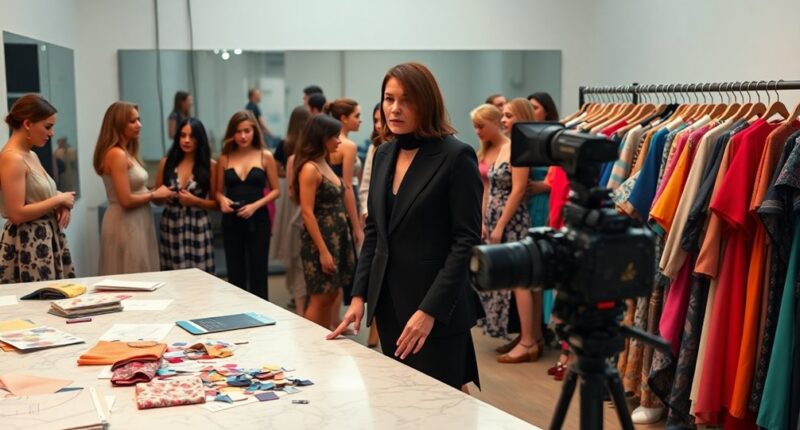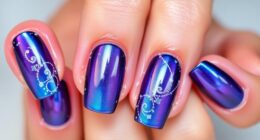As a fashion director, you shape brand identity, navigate market competition, and balance artistic integrity with commercial viability. You'll face challenges like adapting to consumer trends and prioritizing sustainability, but your leadership can build strong brand loyalty. The rewards include redefined brand narratives and significant sales boosts. By understanding your audience's needs and values, you'll foster deep connections in this dynamic industry. Discover how these elements intertwine for lasting success in the fashion world.
Key Takeaways
- Fashion directors shape brand identity through aesthetic direction and collaboration with designers, ensuring visual concepts align with brand values.
- They face challenges in navigating market competition and adapting to consumer trends, particularly the shift toward sustainability and ethical production.
- Balancing creativity with market demands is essential, requiring innovative strategies that promote responsible design and reduce environmental impact.
- Building brand loyalty involves connecting emotionally with consumers through storytelling and personalized experiences, fostering trust and repeat business.
- Effective creative leadership is crucial for sustaining brand relevance, enabling adaptability to changing market trends and consumer needs over time.
The Multifaceted Role of Fashion Directors
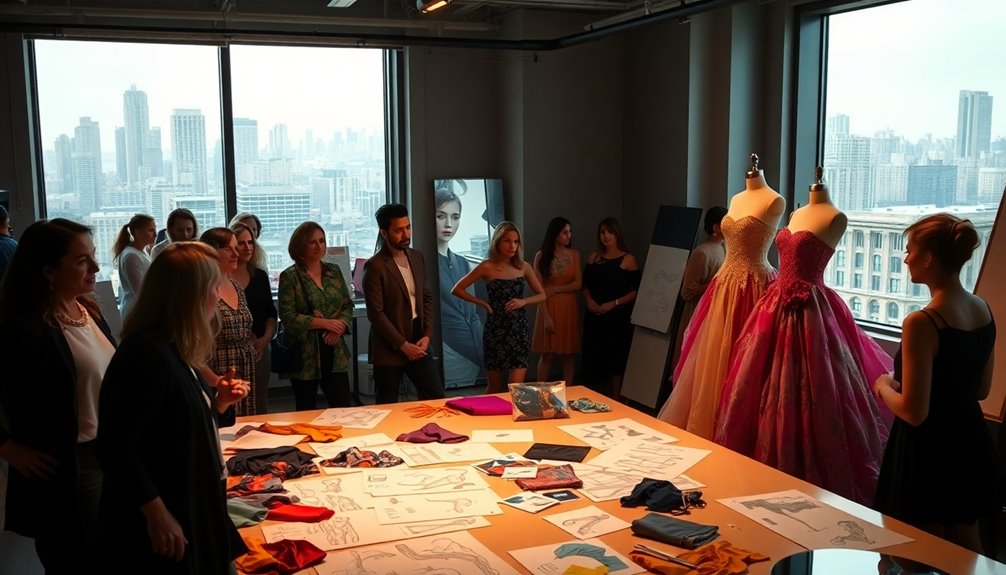
Fashion Directors play an essential role in shaping a brand's identity and success, guiding its aesthetic direction while ensuring it resonates with consumers.
As a Fashion Director, you'll collaborate closely with a team of designers to translate brand values into compelling visual concepts. Your creative vision must align with market demands, making it vital to balance innovation with business acumen.
The challenges you face include fierce competition, the need for continual innovation, and adapting to ever-changing consumer preferences. Your decisions can dramatically affect profitability, as seen during Hedi Slimane's time at Celine, where annual sales doubled to €2.5 billion.
Ultimately, maneuvering these complexities defines your effectiveness as a Creative Director and shapes the brand's long-term sustainability.
Navigating Market Competition and Consumer Preferences

As a fashion director, you need to stay ahead of consumer trends while competing with established brands that dominate the market.
Understanding what your audience craves is essential, especially in a landscape where preferences shift rapidly.
Understanding Consumer Trends
Maneuvering the competitive landscape of the fashion industry requires you to stay ahead of consumer trends and preferences.
Today's consumers often seek brands that offer not just style but also sustainability and ethical production. As a fashion director, you'll need to be creative in your approach, adapting quickly to the fast fashion environment while also addressing demands for lower prices and rapid turnover.
Personalization is key; brands that implement mass customization and co-creation strategies often enhance customer loyalty. Additionally, understanding the importance of diversity and inclusivity will keep your brand relevant.
With the rise of online shopping, explore innovative marketing techniques like virtual showrooms to engage consumers effectively and reflect their evolving values.
Competing With Established Brands
While maneuvering through the competitive landscape of the fashion industry can be intimidating, understanding how to compete with established brands is essential for success.
To effectively navigate this market, focus on consumer preferences, like Phoebe Philo did at Celine, where her insights boosted sales dramatically. Smaller brands often struggle with supply chain challenges, making it tough to keep pace with larger competitors.
The impact of fashion trends, including the rise of fast fashion, demands innovation and sustainability to attract conscious consumers. As customer expectations shift towards personalization, you must adapt your strategies to stay relevant. Iterative processes in product development can help you refine your offerings based on consumer feedback.
Monitor market changes closely and be ready to pivot, ensuring your brand remains a strong contender in an ever-changing landscape.
Balancing Artistic Integrity With Commercial Viability
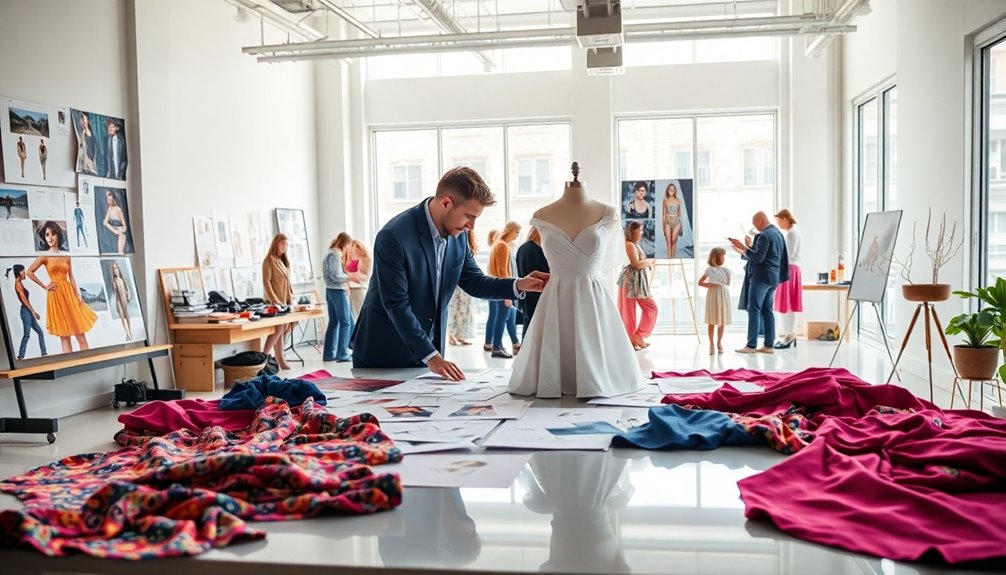
Balancing artistic integrity with commercial viability is essential for fashion directors working to create impactful brands. You must navigate the fine line between creativity and market demands to guarantee your designs resonate with consumers while upholding the brand ethos.
Here are key strategies to achieve this balance:
- Understand market trends: Stay informed about consumers' preferences and adapt your vision accordingly.
- Incorporate brand values: Confirm your designs reflect the core ethos of the brand to maintain loyalty.
- Embrace feedback: Use constructive criticism to refine your artistic vision while aiming for commercial success.
- Innovate responsibly: Create unique pieces that captivate while being mindful of sustainability and ethical practices.
The Importance of Sustainability in Fashion
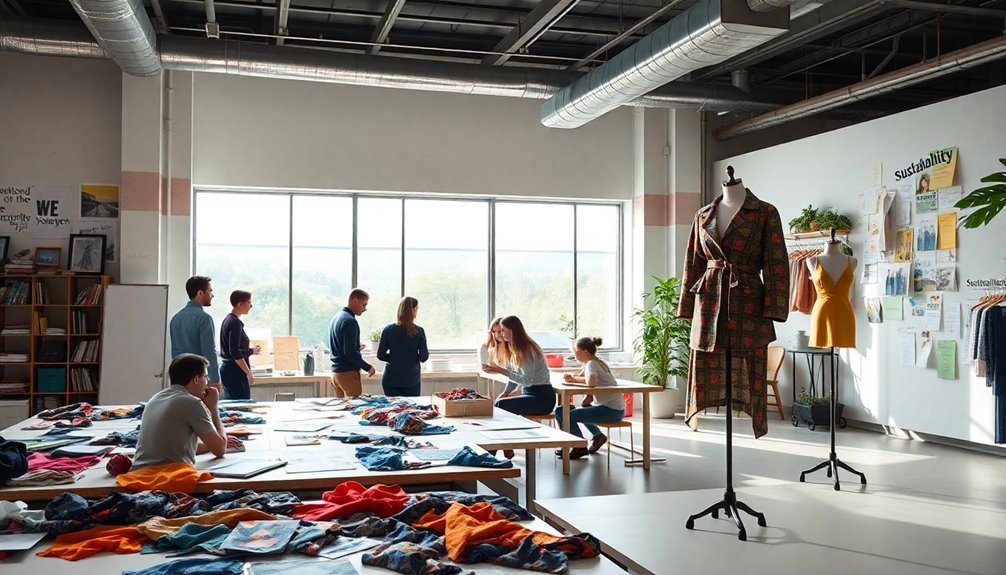
As a fashion director, you play a key role in promoting ethical production practices that not only benefit workers but also align with growing consumer expectations. By prioritizing sustainability, you can greatly reduce the long-term environmental impact of your brand. Embracing these values not only enhances your brand's reputation but also builds lasting loyalty among increasingly conscious shoppers. Additionally, implementing renewable energy solutions in your production processes can further demonstrate your commitment to sustainability.
Ethical Production Practices
The fashion industry faces a critical turning point, where the urgent need for ethical production practices has never been clearer.
With the sector contributing 10% of global carbon emissions, you must prioritize sustainability.
Here are four ways to embrace ethical production:
- Implement ethical labor practices to guarantee fair wages and safe working conditions for garment workers.
- Utilize sustainable materials that reduce environmental impact and promote recycling.
- Adopt transparent supply chains to build trust and accountability within the industry.
- Support circular fashion models that minimize waste through innovative recycling solutions.
As consumer demand for sustainability grows, fashion brands must adapt, not just to stay relevant but also to contribute positively to the planet and its people. The shift towards circular economy practices is essential for reducing waste and promoting resource efficiency in the fashion sector.
Long-Term Environmental Impact
While many may overlook the fashion industry's environmental impact, it's vital to recognize that our choices directly influence sustainability. The industry accounts for about 10% of global carbon emissions, largely due to fast fashion's wasteful practices. By adopting sustainable practices, you can help reduce the environmental footprint and promote a healthier planet. Additionally, fostering customer satisfaction ratings in sustainable fashion can encourage brands to prioritize eco-friendly initiatives.
| Sustainable Practices | Environmental Impact | Transparency |
|---|---|---|
| Eco-friendly materials | Reduces pollution | Clear sourcing |
| Ethical production | Supports workers | Fair wages |
| Recycling and upcycling | Minimizes waste | Accountability |
As consumer awareness rises, demanding transparency becomes significant. By prioritizing sustainability, we can guarantee a more responsible and eco-friendly fashion future.
Building and Maintaining Brand Loyalty
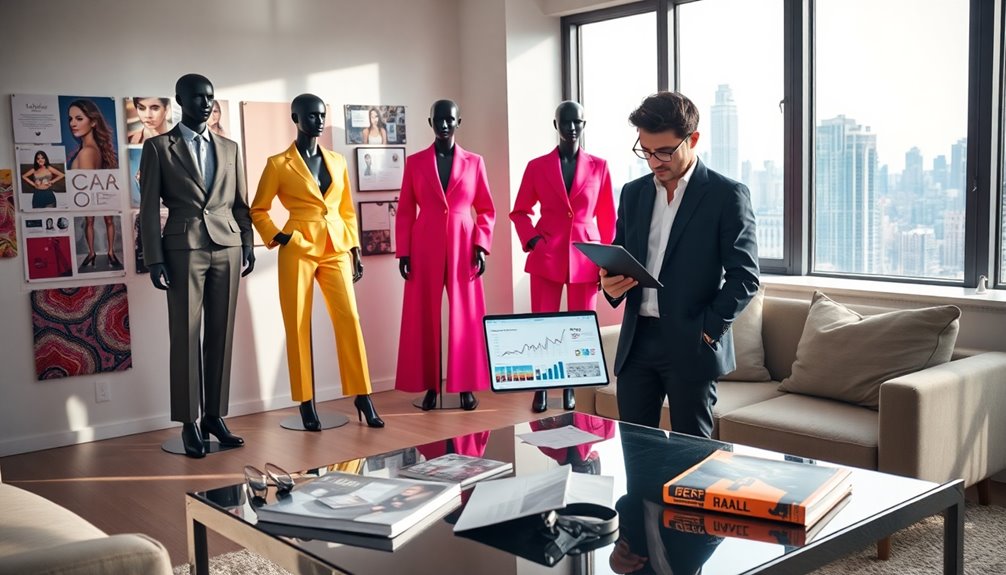
How do successful Creative Directors build and maintain brand loyalty in an ever-changing fashion landscape? They create a strong connection between the brand identity and their customers' daily lives.
Here are key strategies to achieve this:
- Align Collections with Customer Needs: Tailor designs to reflect what consumers want and need.
- Maintain a Clear Vision: Consistency in creativity fosters trust and loyalty.
- Adapt to Shifts in Values: Guarantee the brand ethos resonates with customers' evolving values.
- Cultivate Strong Relationships: Engage with your audience through storytelling and personal connections.
Overcoming Challenges in the Fast-Paced Fashion Industry

Steering through the fast-paced fashion industry can feel overwhelming, especially when designers must juggle multiple collections each year.
The challenges facing you include high production costs and the need to innovate while adhering to financial constraints. As consumer behavior shifts toward sustainability, you'll need to balance your creative vision with responsible sourcing.
Traditional runway shows no longer guarantee ROI, pushing you to explore alternatives like pop-up shops and virtual showrooms to connect with your audience.
Additionally, the rising demand for personalization requires you to implement mass customization strategies that cater to diverse customer preferences.
The Rewards of Creative Leadership in Fashion
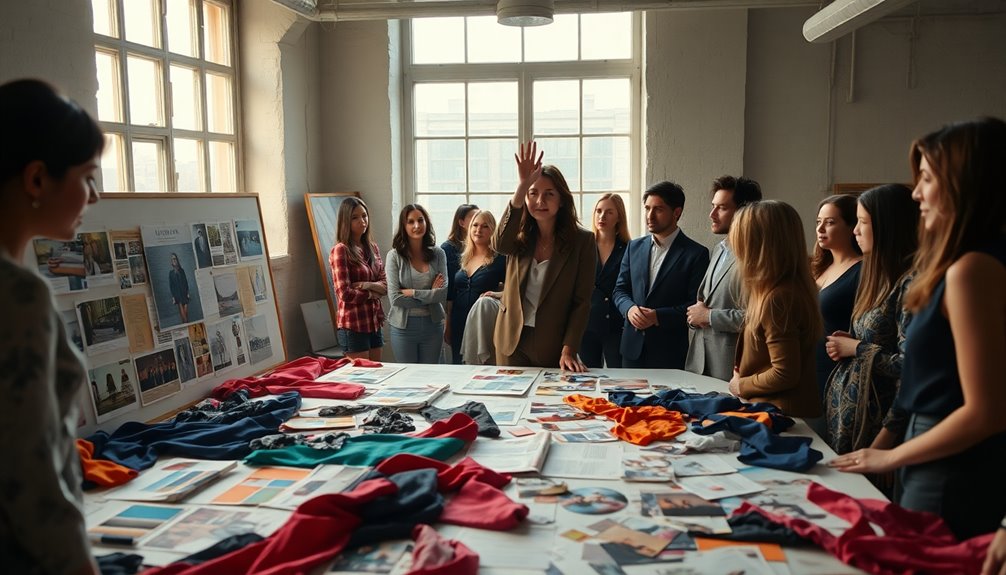
Creative leadership in fashion offers immense rewards, transforming not just brands but entire markets.
When you step into this role, you access opportunities that can elevate a luxury brand to new heights. Here are some key benefits:
- Enhanced Financial Performance: Visionary leaders can boost sales dramatically, as seen with Celine under Phoebe Philo.
- Increased Brand Loyalty: Strong leadership fosters deep connections with consumers, like Virgil Abloh at Off-White.
- Market Positioning: Your creative vision can redefine a brand's narrative and resonate with targeted audiences.
- Sustained Relevance: Influential figures like Karl Lagerfeld sustain a brand's adaptability and relevance over time.
Frequently Asked Questions
What Are the Challenges and Rewards of Working as a Fashion Designer?
As a fashion designer, you'll face challenges like fierce competition and financial constraints while needing to innovate constantly.
The pressure to create multiple collections each year can be overwhelming, and you must navigate issues like sustainability and cultural appropriation.
However, the rewards are significant. You'll experience the joy of expressing your creativity, the thrill of seeing your designs come to life, and the satisfaction of making a positive impact in the industry.
What Do Fashion Directors Do?
Ever wondered how a brand's identity is shaped?
As a Fashion Director, you'll guide the aesthetic journey, influencing everything from seasonal themes to storefront designs. You collaborate with designers, ensuring the brand's vision aligns with market trends and consumer preferences.
Your creative decisions can greatly impact profitability, driving sales and brand reinvention. Ultimately, you're not just creating fashion; you're crafting a narrative that resonates with consumers and propels the brand forward.
What Is the Role of a Fashion Designer in the Fashion Industry?
As a fashion designer, you create clothing and accessories that embody your artistic vision while responding to current trends and consumer needs.
You conduct extensive research, sketch concepts, and develop mood boards to guide your designs. Throughout the process, you face challenges like competition and sustainability concerns, requiring a blend of creativity and business savvy.
Ultimately, your work helps shape cultural narratives and influences consumer behavior, leaving a lasting impact on the industry.
What Is the Role of the Fashion Industry?
You might say the fashion industry is all about creating beauty and self-expression. It shapes trends, influences culture, and drives economic growth while employing millions.
However, it's also a complex world where ethical concerns loom large. You'll find that it's crucial to promote sustainability and fair labor practices while catering to ever-evolving consumer desires.
Ultimately, the industry balances artistry with responsibility, working to meet both aesthetic and ethical standards in everyday life.
Conclusion
In the vibrant tapestry of fashion, your role as a fashion director weaves together creativity and strategy, shaping trends while battling market tides. You stand at the crossroads of artistry and commerce, steering through challenges like a skilled sailor in turbulent waters. Embracing sustainability and nurturing brand loyalty, you transform visions into reality. Though the journey can be a whirlwind, the rewards of inspiring others and leaving a lasting mark on the industry make it all worthwhile. Keep shining!
